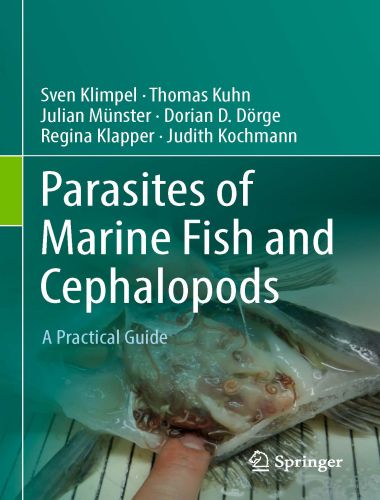Parasites of Marine Fish and Cephalopods – A Practical Guide, This textbook provides a comprehensive, reliable and practical guide to the dissection and parasitological examination of marine fish and cephalopods.
Parasites of Marine Fish and Cephalopods – A Practical Guide

The first part provides a general introduction, presenting basic information on: parasitology, ecology of the marine environment, history and methods of fisheries and aquaculture, as well as the ecology of marine fish and cephalopods and the impact of parasites on hosts. In turn, the second part provides general information on the morphology and anatomy of marine fish and cephalopods using the example of abundant morphotypes (including e.g. habitus photos of the body cavity and internal organs).
The third part covers the relevant parasitic groups, their ecology (e.g. life cycles, transmission), related diseases, and detection. The fourth part, a comprehensive methods section, provides essential protocols and applications of common dissection methods (for roundfish, flatfish and cephalopods) and stomach content analyses, as well as parasite preservation, preparation and molecular identification.
Basic calculations of the most common infection and ecological parameters are also introduced. The book’s fifth and final part provides information on health risks associated with fish and cephalopod consumption, as well as the prevention of human infection through the correct handling and processing of fish samples. The appendix provides e.g. blank sheets for recording fish dissections and parasitological examinations.
The content of this book therefore differs from but does not replace textbooks on parasitology or specific literature for the identification of protozoan and metazoan parasites. It is primarily intended for students, doctoral students, applied parasitologists and fish ecologists, employees of the fishing industry with a basic biological understanding, anglers and ‘interested laymen’.
The structure of the book is very concise. In the introduction, more general information is given. This includes the presentation of fish and cephalopod morphology and anatomy as well as the most important taxonomic groups of parasites. The main part contains the techniques of dissections and analyses, both accompanied by graphic representations and photographs. At the end of each chapter, the most important information is summarised in boxes and a list of important original papers, review articles and monographs is given as well. Textbooks are only mentioned if they are particularly useful for the respective chapter.
| PDF Size: 12 MB | eBook Download |
Password: pdflibrary.net
